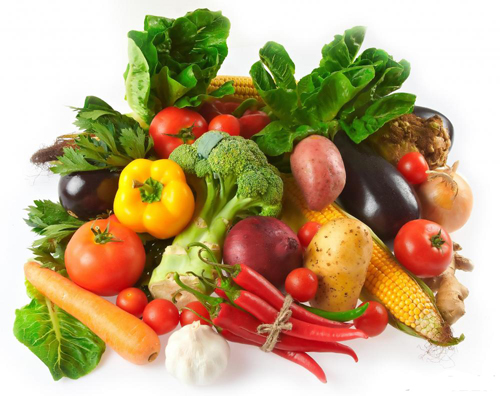***************************************************
MOTHER EARTH NEWS
Freezing Vegetables From Your Garden
Round out your food preservation regimen! Use these great tips for freezing vegetables to turn your garden harvests into delicious, off-season meals.
By Barbara Pleasant
August/September 2013
August/September 2013
Freezing
vegetables is a fast and easy form of food preservation, and most
crops, such as asparagus, broccoli, green beans, peppers, summer squash,
dark leafy greens and all types of juicy berries, will actually be
preserved best if frozen. Part of the beauty of freezing vegetables is
that you can easily do it either in small batches — thus making good use
of odds and ends from your garden — or in one big batch of your
homegrown harvest or peak-season, discounted crops from the farmers
market. Unlike with canning, you don’t have to pay attention to acidity
or salt when freezing vegetables. Instead, you can mix and match veggies
based on pleasing colors and flavors — for instance, using carrots for
color, bulb fennel for texture, and green-leafed herbs for extra flavor.
You can include blanched mild onions in your frozen combos (a good use
for bolted onions that won’t store well), but don’t include garlic,
black pepper or other “seed spices,” which can undergo unwanted flavor
changes when frozen.
The greatest amount of space in my freezer belongs to vegetables, mostly in freezer bags that stack nicely because I first freeze the vegetables flat on cookie sheets. I also allot freezer space for odd-shaped packages, such as those for cabbage leaves that have been blanched and frozen flat for making cabbage rolls in winter. I even steam-blanch and freeze an assortment of hollowed-out, stuffable veggies, such as pattypan squash, zucchini, small eggplant and peppers. By season’s end, the contents of my freezer reflect the full diversity of my garden.
The greatest amount of space in my freezer belongs to vegetables, mostly in freezer bags that stack nicely because I first freeze the vegetables flat on cookie sheets. I also allot freezer space for odd-shaped packages, such as those for cabbage leaves that have been blanched and frozen flat for making cabbage rolls in winter. I even steam-blanch and freeze an assortment of hollowed-out, stuffable veggies, such as pattypan squash, zucchini, small eggplant and peppers. By season’s end, the contents of my freezer reflect the full diversity of my garden.
Freezing Vegetables: The Basics
Only use fruits and veggies in excellent condition that have been thoroughly cleaned. Most vegetables you plan to freeze should be blanched for two to five minutes, or until they are just done. Blanching — the process of heating vegetables with boiling water or steam for a set amount of time, then immediately plunging them into cold or iced water — stops enzyme activity that causes vegetables to lose nutrients and change texture. The cooled veggies can then be packed into bags, jars or other freezer-safe storage containers. Fruits or blanched vegetables can also be patted dry with clean kitchen towels, frozen in a single layer on cookie sheets, and then put into containers. Using cookie sheets for freezing ensures that the fruits and vegetables won’t all stick together, thus allowing you to remove a handful at a time from the container.Unless you’re freezing liquids — which require space for expansion — you should remove as much air as possible from within the freezer container. With zip-close freezer bags, you must squeeze out the air by hand, whereas a vacuum sealer will suck out air as it seals the bags. Vacuum sealing reduces freezer burn (the formation of ice crystals that refreeze around the edges of the food and damage its taste and texture) because the crystals have no space in which to form. To read more about freezer-safe container options, see “Can You Freeze in Canning Jars?,” later in this article.
Read More Here








No comments:
Post a Comment
Hello and thank you for visiting my blog. Please share your thoughts and leave a comment :)